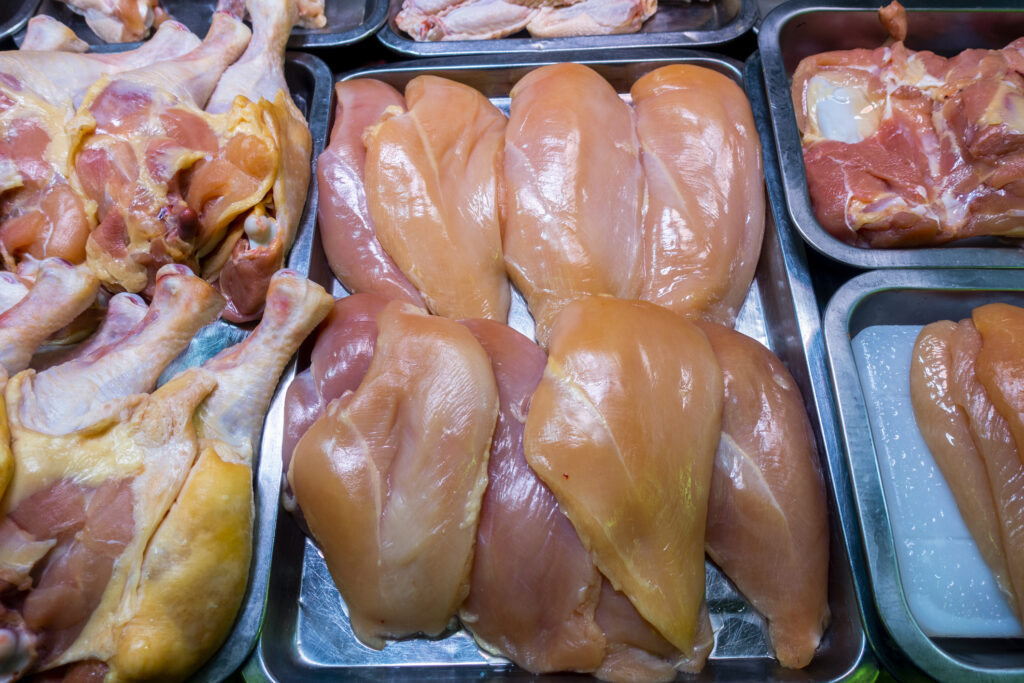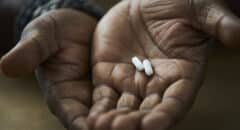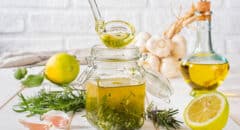 Studies have shown that 44% of the population washes raw chicken prior to cooking. The percentage goes up to 71% when the chicken is frozen.
Studies have shown that 44% of the population washes raw chicken prior to cooking. The percentage goes up to 71% when the chicken is frozen.
Both situations raise the risk of spreading Campylobacter bacteria on multiple surfaces (hands, clothing, cooking utensils, counter tops and more) via splashing droplets of water.
YOU MAY ALSO LIKE: 5 Foods You Should Never Eat After The Expiration Date
Common symptoms of Campylobacter poisoning include abdominal pain, severe diarrhea (often bloody), vomiting, irritable bowel syndrome, reactive arthritis, as well as a serious condition of the nervous system known as Guillain-Barré syndrome.
The Centers for Disease Control estimates that approximately one in every 1,000 reported Campylobacter illnesses leads to Guillain-Barré syndrome.
As many as 40% of Guillain-Barré syndrome cases in the U.S. may be triggered by campylobacteriosis.
The Naked Truth
A single drop of juice from raw poultry can have enough Campylobacter in it to infect a person!
The National Antimicrobial Resistance Monitoring System (NAMRS) reported that 47% of raw chicken samples bought in grocery stores tested POSITIVE for Campylobacter.
Be aware that in addition to raw meat, the bacteria can also be present in the giblets, especially the liver.
TAKE A LOOK: Here's Why Your Chicken Maybe Made In China
The theory, according to the CDC and the Food Safety Agency, is that approximately 50% of all raw poultry contains Campylobacter bacteria. So when people wash it, they inevitably spread the bacteria from the raw chicken to nearby surfaces when water droplets bounce off the raw poultry, thereby contaminating the surfaces (including counters, cutting boards, utensils, hands, arms, clothing, etc).
Since most people don't bleach the area, or they tend to wipe the area with a clean cloth, (rather than using hot soapy water), the bacteria rapidly spread to other surfaces, where they multiply and cause cross-contamination.
We aren't necessarily advocating NOT washing chicken (although both the United States Food Safety Organization and the United Kingdom's Food Standards Agency advises against washing); just that people should be aware that it must be done carefully to avoid potential contamination and spread of a (sometimes fatal) bacteria that isn't well known, but is widespread.
Prevent the Spread
- Do NOT wash raw poultry prior to cooking.
- Prevent cross contamination- Immediately wash any cutting boards/utensils that have come into contact with raw poultry before using them to prepare any other foods.
CHECK OUT: Some Farm-Raised Tilapia May Be As Bad As Bacon
If you feel the need to wash your poultry:
Let's face it, sometimes you MUST wash poultry, like the inside of turkeys before stuffing them, legs/thighs to remove bits of bone from butchering, etc. Here's how to do so safely:
- Place the poultry in a colander in the center of the sink
- Rinse using cold water turned on low, (to help prevent splashing)
- Let the chicken set a few moments to fully drain off
- Wash your hands with hot soapy water
- Wash the surrounding counter areas with hot soapy water (A solution of 1 tablespoon of unscented, liquid chlorine bleach in 1 gallon of water may be used to sanitize washed surfaces and utensils.)
- Dry the counters/ surfaces thoroughly
Properly cooking poultry effectively kills any potential bacteria (Salmonella, Campylobacter, etc) that is on the chicken, but taking these simple steps will ensure that you don't accidentally spread the bacteria prior to cooking.

How to Properly Cook the Different Parts of Chicken
The Whole Bird:
Sometimes, the best cut is all of them. A roasted chicken is one of life’s simplest pleasures. Brush the chicken with clarified butter and season all sides with salt, then roast in a 475°F oven for 20–25 minutes. Reduce heat to 400°F and continue to roast another 30-45 minutes, until thighs and center of breast registers at 160°F and the juices run clear. Let rest at least 20 minutes before carving.
Chicken Breasts:
The chicken breast is a lean cut of meat taken from the pectoral muscle on the underside of the chicken. Each whole chicken contains one chicken breast with two halves, which are typically separated during the butchering process and sold as individual breasts. Given its desirable white meat and health benefits, boneless, skinless chicken breast meat is the most expensive cut of chicken in comparison to chicken thighs, wings, and drumsticks, and can be grilled, baked, roasted, fried, barbecued, and boiled in countless ways.
Chicken Legs (aka Leg Quarters):
The chicken thigh is a cut of poultry taken from the top portion of the leg, above the knee joint that separates the thigh from the chicken drumstick. This is an entirely dark-meat portion of the chicken, and is one of the most affordable cuts of the bird in comparison to more costly white-meat pieces like chicken breasts. Cooking times and results can also differ depending on whether a chicken thigh still has its skin on and bones intact. Boneless chicken thighs require less cooking time, making them a faster option for weeknight dinner recipes. Bone-in chicken thighs will retain moisture and flavor better, making for a generally more flavorful and succulent final product, but they will require extra cooking time. Soak in buttermilk, dredge in seasoned flour and fry for crispy Southern fried chicken, or marinate with ginger, garlic, and lemon juice before you pan-sear.
Chicken Wings:
The chicken wing features two edible parts: the drumette, which resembles a smaller drumstick with white meat, and the flat, which contains tender white meat between two bones. Commonly known as bar food, chicken wings are also delicious when coated with a mixture of your favorite jam, balsamic vinegar, ground ginger and ground garlic and baked at 385°F, turning until skin is crisp and caramelized.
The Bones:
Put all your leftover chicken bones to work and make a versatile chicken stock or chicken broth. Light, golden chicken stock is the workhorse of restaurant kitchens. It’s used for cooking pasta and as a building block for sauces. Reduced and fortified, it can be turned into a delicious soup. “Light” describes its color, but it also means that it cooks for a relatively short time, around 45 minutes at a simmer. Start by cleaning your chicken parts thoroughly—necks, backs, legs and all—removing any blood bits, liver, heart, or other impurities. The cleaner your chicken, the brighter the flavors of your stock will be.
The Fat:
Schmaltz is rendered chicken fat. You can use the fat that accumulates on top of the stock in a variety of ways. Heating it over low heat to evaporate off all the water and straining it to remove impurities. You can roast potatoes or root vegetables with it, or make latkes with it. Store in an airtight container in the fridge for 2 weeks and freeze after that.
Visit the BlackDoctor.org General Health center for more articles.









